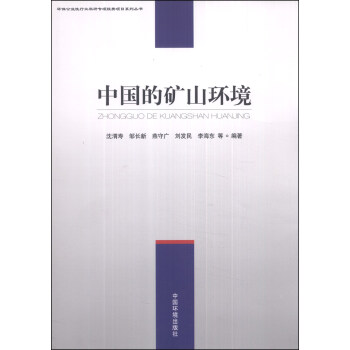![可变重力条件下神经元系统中的自组织和斑图动力学:空间条件下的生命科学 [Self-organization and Pattern-formation in Neuronal Systems Under Conditions of Variable Gravity]](https://pic.windowsfront.com/10743277/565524f5Nf39d848d.jpg)

具体描述
内容简介
Sciences Under Space Conditions describes the interaction of gravity with neuronal systems. To deliver the basic scientific and technological background, the structures of neuronal systems are described and platforms for gravity research are presented. The book is rounded off by information about the interaction of chemical model systems with gravity and some simulations, and results about the interaction of gravity with neuronal systems from single molecules to the entire human brain are demonstrated. This is the first book to give a complete overview about neurophysiological research under conditions of variable gravity.The book is intended for scientists in the field of space research, neurophysiology, and those who are interested in the control of non-linear systems by small external forces.
作者简介
Dr. Meike Wiedemann and Dr. Florian P.M. Kohn are Biological Scientists in the Lab of Membranephysiology at the University of Hohenheim, Germany and have been working in the field of life sciences under space condition for some years. Prof. Harald Roesner has been working in the field of Neurophysiology and is now retired. Prof. Wolfgang R.L. Hanke is the leader of the Department of Membranephysiology at the University of Hohenheim.内页插图
目录
Chapter I Introduction1.1 Historical remarks
1.1. Gravitational research
1.2 Excitable media and their control by small external forces
1.3 Waves and oscillations in biological systems
1.4 Book layout
References
Chapter 2 Gravity
2.1 Physical remarks
2.2 Perception of gravity by living systems
References
Chapter 3 Basic Structure of Neuronal Systems
References
Chapter 4 Platforms for Gravitational Research
4.1 Microgravity platforms
4.1.1 Short term platforms
4.1.2 Long term platforms
4.1.3 Magnetic levitation
4.2 Removing orientation
4.2.1 Clinostats
4.2.2 Random positioning machine
4.3 Macro-gravity platforms
4.3.1 Centrifuge
References
Chapter 5 A Model Systems for Gravity Research: The Belousov-Zhabotinsky Reaction
5.1 Setup for the Belousov-Zhabotinsky experiments
5.2 Preparation of gels for the Belousov-Zhabotinsky reaction
5.3 Data evaluation
References
Chapter 6 Interaction of Gravity with Molecules and
Membranes
6.1 Bilayer experiments
6.1.1 Hardware for the Microba mission
6.1.2 Hardware for the drop-tower
6.1.3 Hardware for parabolic flights
6.1.4 Hardware for laboratory centrifuge
6.1.5 Experimental results
6.2 Patch-clamp experiments
6.2.1 Principles of patch-clamp experiments
6.2.2 Hardware for the drop-tower
6.2.3 First hardware for parabolic flights
6.2.4 For the drop-tower
6.2.5 First parabolic flight experiment
6.2.6 Second hardware for parabolic flights
6.2.7 Second parabolic flight experiment
6.2.8 First results and future perspectives
References
Chapter 7 Behavior of Action Potentials Under Variable Gravity Conditions
7.1 Introductory remarks
7.2 Materials and methods
7.3 Isolated leech neuron experiments
7.4 Earthworm and nerve fiber experiments (rats and worms)
7.5 Discussion
References
Chapter 8 Fluorescence and Light Scatter Experiments to Investigate Cell Properues at Microgravity
8.1 Fluorescence measurements to determine calcium influx and membrane potential changes
8.1.1 Intracellular calcium concentration experiments
8.1.2 Membrane potential experiments
8.2 Light scatter experiments to determine changes in cell size
8.2.1 Static light scatter
8.2.2 Dynamic light scatter
References
Chapter 9 Spreading Depression: A Self-organized Excitation Depression Wave in Different Gravity Conditions
9.1 The retinal spreading depression
9.2 Gravity platforms used for retinal spreading depression experiments
9.2.1 Methods Contents
9.2.2 Experiment setup and protocol for spreading depression experiments in parabolic flights
9.2.3 Experiment setup and protocol for spreading depression experiments on TEXUS sounding rocket
9.2.4 Setup and protocol for spreading depression experiments in the centrifuge
9.2.5 Data analysis
9.3 Results
9.3.1 Spreading depression experiments in parabolic flights and in the centrifuge
9.3.2 Spreading depression experiments on sounding rockets and in the centrifuge
9.3.3 Determination of latency of spreading depression waves in the centrifuge
9.3.4 Summary of all spreading depression experiments on different gravity platforms
9.4 Discussion
9.4.1 Comment on different gravity platforms
References
Chapter 10 The Brain Itself in Zero-g
10.1 Methods
10.1.1 Slow cortical potentials (SCP)
10.1.2 Classical frequency bands in EEG
10.1.3 Peripheral psycho physiological parameters
10.1.4 Protocol and data analysis
10.1.5 Subjects
10.1.6 Ethic
10.2 Results
10.2.1 Slow Cortical Potentials (SCP)
10.2.2 Frequency band EEG
10.2.3 Peripheral stress parameters
10.3 Discussion
10.3.1 Slow cortical potentials
10.3.2 Frequency band EEG
10.3.3 Peripheral parameters
10.4 Conclusion
References
Chapter 11 Effects of Altered Gravity on the Actin and Mierotubule Cytoskeleton, Cell Migration and Neurite Outgrowth
11.1 Summary
11.2 Introductory remarks
11.3 Material and methods
11.3.1 Cell transfection
11.3.2 Cell culture and experiments with SH-SY5Y neuroblastoma cells
11.3.3 Cell migration experiments- Human carcinoma cell lines
11.3.4 Scratch Migration Assay (SMA)
11.3.5 Neurite outgrowth experiments-Primary cell culture of embryonic chicken spinal cord neurons
11.3.6 Imunostaining of cells
11.3.7 Staining of F-actin
11.3.8 Microscopy and live imaging
11.4 Results and discussion
11.4.1 Effects of altered gravity on actin-driven lamellar protrusion of SH-SY5Y neuroblastoma cells
11.4.2 Effect of altered gravity on the microtubule cytoskeleton of SH-SY5Y neuroblastoma cells
11.4.3 Effects of altered gravity on cell migration
11.4.4 Effects of altered gravity on the intensity and direction of neurite outgrowth
References
Chapter 12 Discussion and Perspectives
References
Index
精彩书摘
The question, which can be the cellular and further consequences of a higher open state probability is not that simple to be answered and will depend on the ion-channel under investigation. Up to now, only data for some specialized cases (model systems) are available, which are not to be applied to neuronal systems. However, let us speculate about the membrane of a neuron, having at least potassium channels to give the resting membrane potential and sodium channel to en- able action potentials (Hille, 1992; Weiss, 1997). The sodium channels are closed at rest; the potassium channels are permanently open at a non-zero open state probability. In a simplified discussion, closed sodium-channels would not be affected by gravity as the gating mechanism is of electrical nature, a depolarization of membrane across a threshold value. However, potassium channels as being open anyhow, would react to gravity changes, applying microgravity would lower their open state probability. Having the Goldman equation in mind (Weiss, 1997) this would lead to a membrane depolarization. As long as the threshold for sodium channels is not reached, no action potentials would be elicited, but further stimulation would more easily give an action potential.The next set of experiments which has to be taken into account then is those with spontaneously spiking neurons. A prediction from the above statements (speculations) would be that in this case the spike frequency should be higher at microgravity. Just that has been shown. Also, a direct measurement of membrane potential should result in less negative values. In the experiments utilizing voltage sensitive dyes accurately this has been shown. According to textbook knowledge (Hille, 1992), at depolarization of membrane potential, voltage sensitive calcium channels open in the cell membrane, calcium enters the cell, and the intracellular calcium concentration increases. This could not be verified, in some experiments instead it was shown that the intracellular calcium level at microgravity drops (see above). As the intracellular calcium concentration is a highly regulated value, this could be due to secondary effects, but will have again to be investigated more deeply.
用户评价
《可变重力条件下神经元系统中的自组织和斑图动力学:空间生命科学》这本书,给我的整体感觉是充满了探索未知的好奇心和严谨求实的科学态度。在阅读过程中,我仿佛跟随作者一起,深入到那些肉眼无法企及的微观世界,观察着神经元信号的传递,感受着它们之间复杂的互动。书中关于“斑图动力学”的讨论,尤其令我印象深刻。它不仅仅是描述一种现象,更是试图理解这种现象背后的生成机制和演化规律。想象一下,在失重或变重力环境下,那些原本熟悉的大脑活动模式会发生怎样的变化?是会瓦解,还是会重塑出全新的、适应性的“斑图”?这本书似乎在提供一个思考的框架,引导读者去探索这些问题的答案,其价值不言而喻。 这本书的论述方式,也让我觉得既有理论的高度,又不乏实际的应用前景。作者在探讨基础科学原理的同时,也清晰地指出了这些研究对于未来航天医学、神经退行性疾病研究,甚至人工智能发展的重要性。这种将基础研究与潜在应用紧密结合的叙事方式,极大地提升了我对这本书的阅读兴趣。我尤其欣赏作者在分析复杂问题时,所展现出的那种化繁为简的能力,尽管我无法完全理解所有的技术细节,但其核心思想却能被清晰地捕捉到,并引发我深入的思考。
评分初翻《可变重力条件下神经元系统中的自组织和斑图动力学:空间生命科学》,就被其标题所吸引。它预示着一场跨越学科边界的精彩旅程。作者并没有止步于对神经科学的静态描述,而是将其置于一个动态且极具挑战性的物理环境中——可变重力。这让我不禁联想到,我们日常生活中习以为常的重力,对我们的大脑和身体究竟有多么深远的影响?而当这种影响被大幅度改变时,生命系统,尤其是复杂如神经元系统,会如何“重新学习”和适应?书中对“自组织”过程的深入剖析,似乎暗示着生命在面对外界剧烈变化时,并非束手无策,而是拥有一种内在的、强大的自我修复和重塑能力,能够从混乱中孕育出新的有序结构。 对我而言,最引人入胜的部分是关于“斑图动力学”的探讨。它不仅仅是关于形态学上的变化,更是关于信息处理和功能实现的模式。在可变重力环境下,神经元信号的传递、信息整合的方式,乃至最终产生的行为模式,是否会演化出不同于地球环境的“斑图”?这本书似乎在尝试解答这些令人兴奋的问题,并且通过严谨的科学方法,为我们提供了理解这些潜在变化的可能性。这种对生命适应性和潜能的深度挖掘,让我对人类在宇宙中的未来,以及生命本身的韧性,有了更深的敬畏。
评分我近期有幸拜读了《可变重力条件下神经元系统中的自组织和斑图动力学:空间生命科学》一书,对其宏大的视角和深入的研究方向感到由衷的赞叹。尽管我并非专业领域的学者,但作者以其清晰流畅的笔触,将一个极其复杂且前沿的科学课题,如剥茧抽丝般地呈现在我面前。书名本身就充满了科幻般的想象,但内容却根植于扎实的科学原理。它不仅仅是对神经元系统本身固有复杂性的探讨,更是将这种复杂性置于一个全新的、动态的外界环境中——可变重力。这一点深深吸引了我,因为我们对生命如何适应和响应极端环境的了解仍然十分有限,而这本书无疑为我们打开了一扇窥探未知的大门。 书中对于“自组织”和“斑图动力学”的阐述,让我对生命系统的内在规律有了更深刻的理解。我一直对那些看似杂乱无章却又遵循某种内在秩序的自然现象感到着迷,例如雪花的晶体结构,或者潮汐的规律性变化。而这本书则将这种“自组织”的原理,聚焦到了微观的神经元层面,并进一步将其与宏观的重力变化联系起来。作者似乎在试图揭示,即使在最基础的生命单元层面,也存在着一种强大的、自我驱动的秩序形成机制,而这种机制可能在面对诸如太空旅行等特殊环境时,表现出令人惊叹的可塑性和适应性。这种对生命本质的追问,让我对未来医学、仿生学乃至人工智能的发展充满了期待。
评分《可变重力条件下神经元系统中的自组织和斑图动力学:空间生命科学》这本书,给我最深刻的印象是其前瞻性和跨学科的融合。它不是简单地堆砌枯燥的理论,而是将神经元系统这一生命科学的核心议题,置于一个全新的、充满挑战的“可变重力”这个大背景下进行考察。这是一种极具创新的视角,因为它迫使我们重新思考,在我们最为熟悉的重力环境中,神经元系统是如何形成的,又是如何工作的。而当重力这个关键因素发生变化时,生命系统又会展现出怎样令人意想不到的“自组织”能力和“斑图动力学”? 我特别欣赏作者对于“自组织”过程的细致阐述。它揭示了生命系统并非是被动地接受外界刺激,而是在复杂的内部规则和外部扰动之间,能够主动地、有目的地生成秩序。在可变重力的环境下,这种自组织能力可能会被激发到何种程度?是否会产生全新的神经网络连接模式,或者信息处理策略?书中对“斑图动力学”的分析,则让我看到了生命系统对环境变化的响应并非是随机的,而是可能遵循着一套潜在的、可预测的动力学规律。这种将微观的神经活动与宏观的物理环境相结合的研究,为我们理解生命在极端条件下的生存和演化,提供了宝贵的科学依据。
评分不得不说,《可变重力条件下神经元系统中的自组织和斑图动力学:空间生命科学》这本书,在我阅读过的众多科学著作中,留下了极为独特且深刻的印象。它之所以如此引人入胜,在于其巧妙地将“生命科学”与“空间探索”这两个看似遥远的领域紧密连接起来。作者并没有局限于对现有神经元模型的研究,而是将目光投向了一个极其特殊且充满未知的前沿——可变重力条件。这种大胆的设想,立刻激起了我强烈的好奇心:在完全不同的重力环境中,我们所熟悉的大脑和神经系统,是否会发生翻天覆地的变化? 书中对于“自组织”和“斑图动力学”的深入探讨,更是让我惊叹于生命系统的韧性和适应性。它描绘了一个生动的图景:在重力这一关键物理参数被改变的情况下,神经元网络如何通过内在的动力学过程,自发地形成新的秩序,并涌现出新的功能模式。这种从无序到有序的转化,在如此复杂的生命系统中展现出来,无疑是对生命活力的一种有力证明。这本书不仅仅是关于神经科学的,它更是一本关于生命如何挑战极限、突破边界的探索之作,为我们理解生命在宇宙中的多样性和可能性,提供了全新的视角和深刻的洞见。
相关图书
本站所有内容均为互联网搜索引擎提供的公开搜索信息,本站不存储任何数据与内容,任何内容与数据均与本站无关,如有需要请联系相关搜索引擎包括但不限于百度,google,bing,sogou 等
© 2025 book.coffeedeals.club All Rights Reserved. 静流书站 版权所有


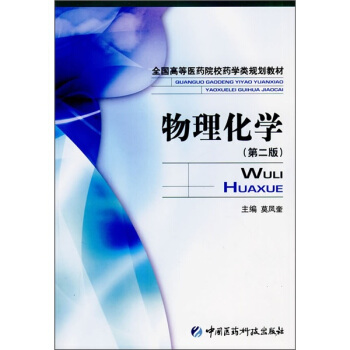

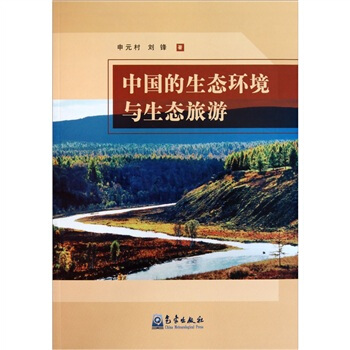



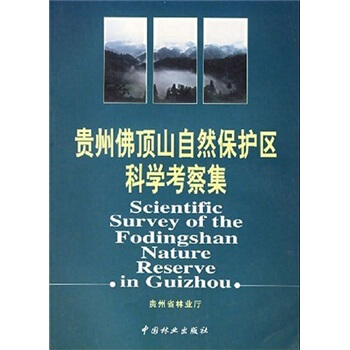


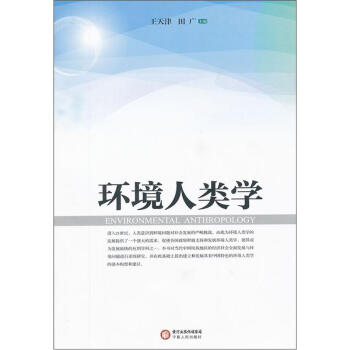



![今日化学(2012年版) [Chemistry Today] pdf epub mobi 电子书 下载](https://pic.windowsfront.com/11238720/rBEQYFGmoxkIAAAAAAja2Xj-LFUAACT4QAsrO0ACNrx364.jpg)



